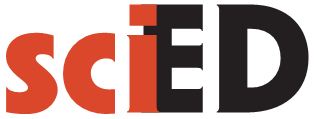Abstract
To assess effectively the influence of peer discussion in understandingconcepts, and to evaluate if the conceptual understanding through Interactive Lecture Demonstrations (ILD) and collaborative learning can be translated to actual situations, ten (10) questions on human and carts in motion were presented to 151 university students comprising mostly of science majors but of different year levels. Individual and group predictions were conducted to assess the students’ pre-conceptual understanding of motion graphs. During the ILD, real-time motion graphs were obtained and analysed after each demonstration and an assessment that integrates the ten situations into two scenarios was given to evaluate the conceptual understanding of the students. Collaborative learning produced a positive effect on the prediction scores of the students and the ILD with real-time measurement allowed the students to validate their prediction. However, when the given situations were incorporated to create a scenario, it posted a challenge to the students. The results of this activity identified the area where additional instruction and emphasis is necessary.References
Slavin, R.E. (1983). When does cooperative learning increase student achievement? Psychological Bulletin, 94, 429–445.
Thornton, R.K. & Sokoloff, D.R. (1990). Learning motion concepts using real-time microcomputer-based laboratory tools. American Journal of Physics, 58 (9), 858–867.
Thornton, R.K. & Sokoloff, D.R. (1997). Using interactive lecture demonstrations to create an active learning environment. The Physics Teacher, 35(6), 340–347.
Thornton, R.K. & Sokoloff, D.R. (1998). Assessing student learning of Newton’s laws: The force and motion conceptual evaluation and the evaluation of active learning laboratory and lecture curricula. American Journal of Physics, 66(4), 336–352.
Thornton, R.K. & Sokoloff, D.R. (2004). Interactive lecture demonstrations: Active learning in introductory physics. Hoboken, NJ: Wiley.
Authors who publish with this journal agree to the following terms:
- Authors retain copyright and grant the journal right of first publication with the work simultaneously licensed under a Creative Commons Attribution License that allows others to share the work with an acknowledgement of the work's authorship and initial publication in this journal.
- Authors are able to enter into separate, additional contractual arrangements for the non-exclusive distribution of the journal's published version of the work (e.g., post it to an institutional repository or publish it in a book), with an acknowledgement of its initial publication in this journal.
- Authors are permitted and encouraged to post their work online (e.g., in institutional repositories or on their website) prior to and during the submission process, as it can lead to productive exchanges, as well as earlier and greater citation of the published work (See The Effect of Open Access).
